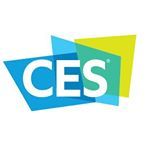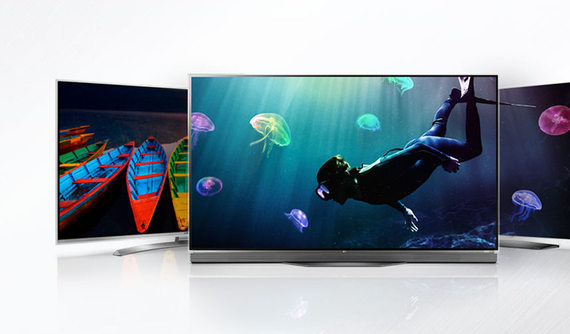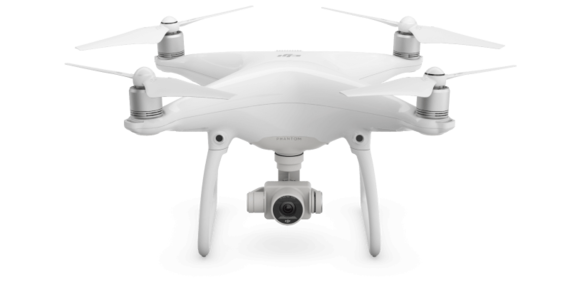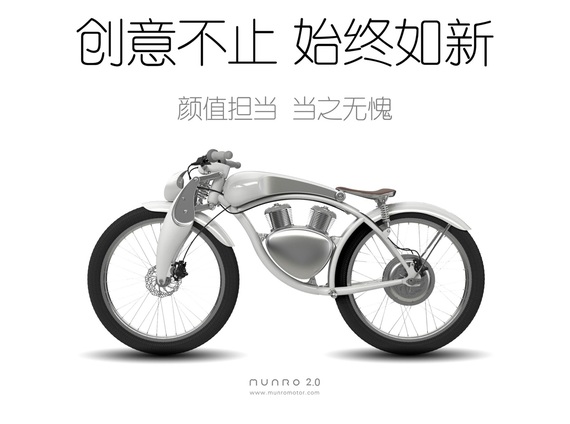CES, the beast with 200,000 attendees and more than 30,000 exhibitors that sprawls across Las Vegas, taking over the entire North Center and South Halls of the Las Vegas Convention Center and spills over to the Westgate, the Sands Expo halls, and the Venetian Hotel, as well as the Aria's conference center, continues even in this digital age to make a potent case for attending to see first-hand new products and innovations abounding that touch every aspect of our increasingly connected lives.
This is CES' 50th iteration - In the five years that I've attended it has continued to grow, devoting increasing space to cars (which now market themselves as a technology play), football fields of stalls devoted to cities in China that produce consumer electronics, as well as increasing amounts of space to tech start ups from France, Israel, South Korea and The Netherlands. This year France made an incredibly strong showing featuring more than 200 companies/products not just Paris based companies but from all over France (19 French companies' products were selected for CES Innovation awards (among them Parrot drones, In&Motion Ski airbag safety vests, and Hydrao, a smart shower controller).
This year's big news is that TVs have actually made such great leaps forward that most of us will probably buy new and better (and perhaps even bigger) TVs in the next 3-5 years. In the past, CES has always devoted substantial real estate to new TVs that seemed incrementally better (and larger) but not worth it, offering features that we were either never going to use (3D?) and that we didn't care about (8K? Curved screens?). This year the TVs actually were demonstrably advanced in covet-worthy ways: They are impossibly thin, have better resolution, deliver more colors, and have improved sound - even while getting even bigger (77 inches is the new 65; 65 is the new 55). Among the notables that will become, affordable and essential with time, are Samsung's QLED line (Quantum Dot technology provides a brighter screen than even OLEDs), LG's OLED TVs (The W line is so thin that it can affix to the wall with magnets, and Sony's Bravia A1 Series OLED - for which the entire screen is the speaker.
The other big headline is the integration of Amazon's Alexa and voice control into home products. You might say: Who cares? Or: I have an Alexa but I really don't use it to do much. All true. But Here's the thing - all those people who are tech-phobic, who can't program any device (particularly those who can't figure out their phones or how to get to Netflix on their TV), and don't order online - all those people know how to talk. "TV on" or "Order more 2% milk" is within their wheelhouse. With voice integration suddenly sophisticated technology becomes useable to everyone - that is a major development that is quickly coming to a device you'll actually use.
Drones are no longer a gimmick or toy. They are definitely now a category - there are professional drones, commercial drones, miniature drones. Young men have to have them. So do cameramen, real estate agents, and the same sports enthusiasts who adopted the GoPro. DJI seems to be killing the category (their Phantom 4 is remarkable) but there are many, many other companies entering the field. The next few years in the Drone wars will be interesting indeed.
There is a lot of investment in Virtual Reality (VR) and a lot more players in the space. However, based on what I saw at CES, the jury is still out on how each or any of us will use VR. By contrast, the laptop, whose death by tablet and smartphone was predicted a few years ago, is back in full force with Dell's XPS13, HP's Envy, and Lenovo's X1 Carbon delivering superior performance in lightweight, aesthetically pleasing packages.
What really struck me at this year's CES is the impact of Design Thinking and how the kind of industrial design that Apple is known for (sleek, attractive, ergonomic, functional) now permeates every category of consumer electronics. So, for example, if a car drives itself, how can you reimagine the interior? (One prototype is a home seating arrangement that retracts into the garage and the car). Over at Samsung and LG they have rethought the design of refrigerators - allowing screens on door to become see-though, or opening in different ways to allow easy access to the items you use most. Similarly, Sony has a whole lifestyle brand called UX which features short throw projectors such as the LSPX-P1, that can display images (moving or still) at sizes 22" to 80" in any direction - onto a table, a floor or a wall; as well as TVs that look to all the world like a painting and then transform into screens. Cool stuff.
Sensor driven devices continue to improve and now extend to almost any kind of human activity. So, for example, There were a lot of fertility indicators for those wanting (or not wanting) to get pregnant such as Fertiliti is a tracking device and app that helps a woman plot a variety of indicators to determine her most fertile days in her cycle. Omron now has a watch-like blood pressure monitor - Project Zero 2.0 which can take measurements all through the day (which is a more reliable indicator of blood pressure problems) that is awaiting FDA approval before coming to market. There are bands that can measure a whole variety of human functions, and in some cases help control them. One the weirder (and scarier) items I saw at CES was Pavlok - it's a wristband that provides a little electric shock that is programmed to help change bad habits (smoking, nail biting, snacking). Could be right for you; but it scares me.
Speaking of personal, there are Toto toilets and washlets with remote control and deodorizers and driers and front back washing. In the category of connected things I'm not sure we need, Withings has partnered with Keratese (a L'Oreal owned brand) for a $200 connected hair brush, a "Hair coach." that measures how you brush your hair as well its condition (and I assume then recommends beauty products to use).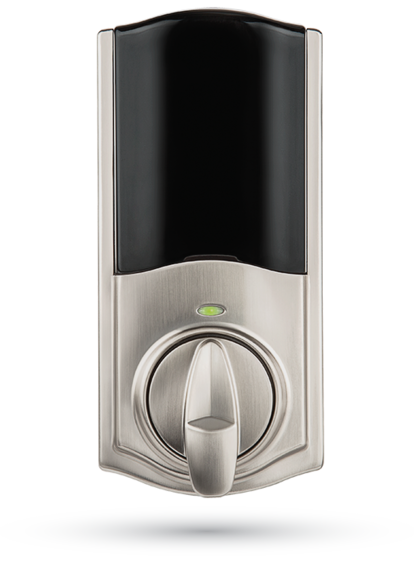 Kevo Convert
Kevo Convert
Technology now starts at the front door: Kwikset, Kevo and Baldwin all now make attractive electronic locks at every price point and in a variety of designs and styles (some allowing touch access, others providing electric keys, keypad codes, or delivering remote access via app). I particularly liked Kevo Convert ($149) which allows you to make your existing lock into a smart lock set.
Once inside the home, the next battlefront is improving Wifi reception - to which the answer is Mesh (as opposed to meh). Mesh is a thing. Luma ($399 for a three pack of hexagonal pucks) improves WiFi throughout your home, adds a layer of security protection, and allows to control (or even pause) internet usage in your home. A hexagonal puck and an app control. Another mesh offering, AmpliFi HD from Ubiquity, I found both attractive and impressive (I have been testing one). A stand alone unit plugs into the wall and retails for $99 (or a set of two and a router base for $349). 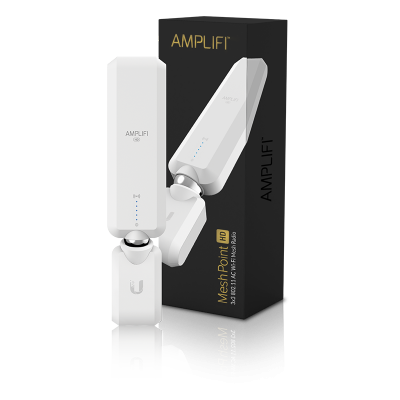 ampliFi HD Meshpoint
ampliFi HD Meshpoint
While we're in the home, we would be remiss if we didn't say that connected lights which only a few years ago seemed gimmicky and expensive have now become commonplace. There are still expensive bulbs loaded with new features (speakers) or that claim to be better in one way or another, but there are now affordable systems. Killing in this category is Lutron, which has a three tiered level of connected lighting offerings, beginning with their Caseta series (best for one room), RadioRa 2 whole home system which increases functionality and connectivity with other services and devices (Sonos, Alexa, among others), and their top-of-the-line whole home (or whole mansion as the case may be) Homeworks QS which can control the lights inside and out, and the shade and sunlight inside the house, as well as the music and also integrates with yet more devices and appliances.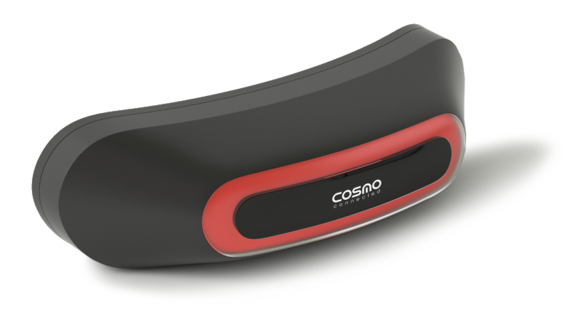 cosmo connected hemet device
cosmo connected hemet device
Of course, since connected devices have to be part of everything you do, you need connected devices outside of the home, even for riding your bike. Coros makes a smart cycling helmet, Linx, which has bone conducting audio a separate smart remote you can affix to your handle bars - ears, eyes and hands free two way audio for music and calls, voice navigation anddate llooks like a traditional bike helmet, no wires, no earbuds - and emergency alerts should you fall. Babaali is a Chinese company that also makes a smart sports helmets and even a smart construction helmet. If you like the helmet you have, a great solution is Cosmo connected, a $99 device that attaches to the back of any helmet and functions as a connected brake light and initiates emergency calls within 3 minutes with GPS coordinates and medical information and can also alert family and friends in case of an emergency. And to go with your connected helmets, Deeper (the folks who brought you the smart fish finder) have created a smart bicycle lock - which if you are investing in an expensive bike or Ebike and have a connected helmet, you definitely need.
Another are where there seems to be rapid advances, new technology, and many players is what I'll call: Noise & Sound.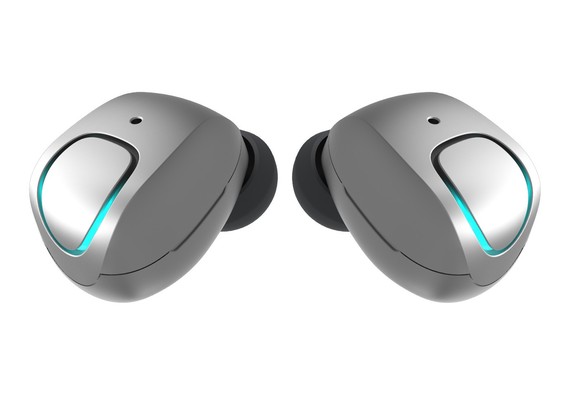 SkyBuds
SkyBuds
Blame it on the Iphone 7's lack of an earphone, but wireless earbuds seemed everywhere. Some of the most impressive ones I tested were Skybuds ($219) offering great audio quality, a choice of ear buds for fit, a microphone and a long lasting rechargeable battery power (they offer a portable dock which can recharge the ear buds for up to 24 hours).
Beyond ear buds, change is coming to speakers. French company Akoustic Arts has developed a thin speaker, the "A" series, that can direct sound directly to a limited area )so for example diners at a restaurant could have different music playing at each table, or so that at a concert the sound in the front of the room sounds exactly like it does in the back of the room). At CES, they introduced a new product, the "b" series, which can make it so the kids watching videos in the back of the car doesn't interfere with you listening to music in the front.
At the same time, audio technology is now also focusing on its ability to deliver the opposite of sound - that is quiet. Quiet On (ear buds that provide active noise cancelling). Tilde earphones from France's orosound.com personal noise cancelling for office workers (but not for sleeping and snoring noise cancellation. Silent space has "sound masking" technology that limits the impact of noise in public spaces (it's kind the opposite of a speaker; it makes it so that in co-working spaces, noise from one area won't bleed into another). Yet they still can't silence a snoring partner.
Each year at CES, I indulge in listening to impossibly high end audio equipment where, when Sting or James Taylor sings, you can hear each guitar string plucked. Metronome (another French success story) makes incredible CD players (and at around $5000 - I won't say it's worth it but if money is no object then indulge away). ELAC makes wonderful high end speakers (their new Andrew Jones designed bookshelf speakers are $2500 a pair) and high end music servers. Tivoli Audio and Como Audio, although pricey, continue to makes gorgeous little radios, streaming music players and mini systems.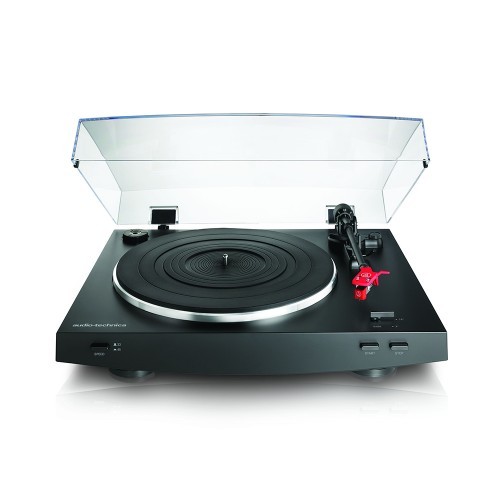 AT-LP3
AT-LP3
In the audio category, Audio-Technica continues its tradition of quality audio components including its AT_ART 1000 Direct Power phono cartridge, and its own line of turntables, including what may be the perfect starter turntable, Audio-Technica 's LP3, a fully automatic Belt Drive stereo turntable. Pro-Ject is also expanding its line of turntables in a wide variety of materials and finishes. Speaking of entry level, The Pro-Ject Debut Carbon (at $399) is another great place to start your audiophile obsession. Technics is also back with its Ottava all-in-one premium Hi-Fi system that plays hi-res internet music as well as CDs and can be app controlled all in an elegant and sleek page - but it's still priced north of $1500,
And each year, I continue to believe we are getting closer to adoption of Hi-Res Audio. I have to believe that the same people who buy all the headphones, vinyl records and turntables, now understand that the mp3 compressed music files kept on their phones are sonic junk food - and that with cheaper storage, faster streaming, larger audio files will become more popular. Last year, Neil Young's Pono music player made a splash with a successful kickstarter campaign and the promise of portable hi-res audio - and seemed to disappear soon after. This year there were more Hi-res audio players (Astell & Kern, Sony, Hifiman, Onkyo, Pioneer, Marantz) and more companies who audio receivers can stream or play hi-res audio files including the relatively new MQA format. But the question remains: what will it take to get millennials to adopt it. This is a subject worthy of its own article and discussion in greater depth. But while at CES, I did discover the answer in all its wondrous simplicity. The short version is: Hi-Res music will become widely adopted when Spotify offers it. In the meantime, the often-maligned and dismissed-as-dead-or-dying Tidal music service, offers a high-res streaming music service ($20 a month) that may yet prove to be its unique selling proposition.
In the meantime, CES is always a grab bag (sometimes literally) of novel, mind-blowing, or just plain fun desirables. Here are few that caught my eye: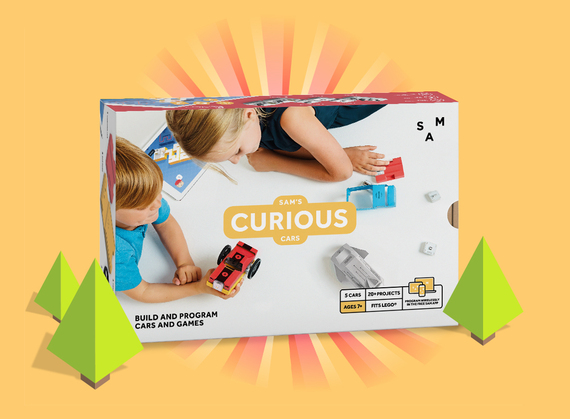
SAM labs have created these amazing kits for kids, that with wireless smart building blocks and an app lets them build lego-like connected devices. It's meant for children ages 7 and up - but even I could follow the easy directions and, in less than a minute, I had built a motorized drag racer from their kit. How great is that?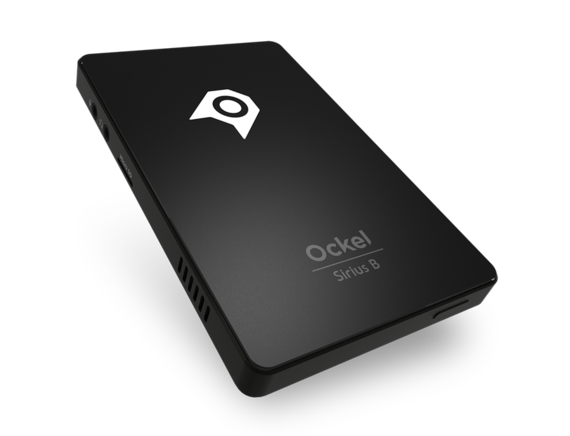 Sirius B Black Cherry
Sirius B Black Cherry
I was also impressed by Ockel who have created a full function Windows 10 PC (Sirius B Black Cherry priced between $250-$350) that fits in your pocket - and their new Sirus Pro that is an attractive wedge that incorporates a screen which you can use to make VOIP calls, video chat, or watch media. Kind of a genius travel solution or a way to have an extra computer at your fingertips.
In the "I want one but then what would I do with it" category is the impossibly attractive Munro 2.0, a stylish, retro designed electric motorbike (more of a moped than a bicycle than can go some 28 mph and has a 60 mile range).
Being a bit more practical, in the simple but useful category, Nemonic is a stylish little cube that sits on your desk and can wirelessly print sticky notes. Gnarbox is a $299 rugged portable unit smaller than a paperback (remember those?) that stores 4K video, backs up wirelessly, offers easy editing tools, and the ability to share 4K video and Raw photos. Perfect the GoPro filmmaker in your life. GoPlug which was awarded a 2017 CES Innovation award has a portable power bank, as well as bags designed to contain power when yours is running low, as well as AC power, GPS, Phone alerts and a movement alarm founded by Josh Cross and funded with a successful kickstarter design, but not inexpensive - the power bank costs $349 and the messenger bag and a smart power bank is $359. They even have a backpack with a solar panel.
Two apps that made an impression on me: AmpMe, is a brilliant app that allows a group of friends to have their phones all play the same song at the same time, making each phone an extra speaker for the party that is sure to follow. MySize an Israeli startup, has the free ap Sizeup which allows you to measure anything (up to about 20 feet) with your smartphone. They are also developing MySizeID a self measurement tool for purchasing clothes online and BoxSizeID a measurement app for packages and courier delivery. They are a public company (Nasdaq MYSZ)
Finally, although at CES our feet are very much on the ground, it is a place for dreaming and reaching for the stars. In that vein, one of the coolest new items I saw was Tiny1 "the world's smallest astronomy camera" - a pocket-sized camera that was created specifically to take pictures of the night sky moon and stars, and is equipped with smart features like a star map so you can know what you are aiming at, and the ability to transfer and share your images. It seems impossible that it can do as amazing a job as it does.
But then again, one could say the same about CES, even after 50 years.

